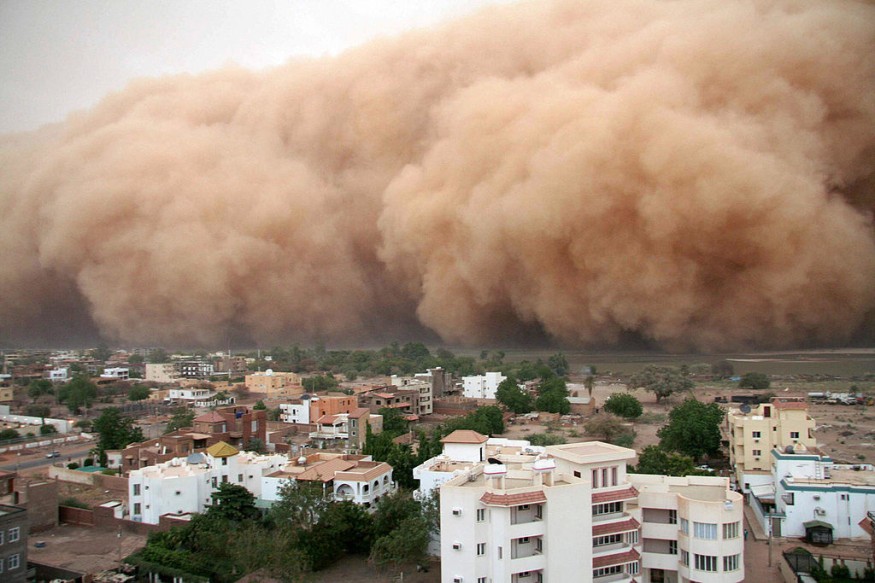Dust storm from the Sahara Desert in Africa has covered Europe with its swirling air of thick sand and dirt. The so-called Saharan dust storm has reached Spain first and then spread throughout the continent.
Airborne particles from the storm have posed hazards to breathing and respiratory health.
The dust storm reportedly traveled thousands of kilometers over the Mediterranean Sea from the African desert over recent days. The Saharan dust cloud has degraded the air quality of some of the major cities in Europe, notably Madrid, Paris, Belgrade, and as well as in London.
Although the occurrence of a sand storm is common in Africa each year. The current Saharan sand storm is reported to be intense due to the amount of dust and sand that the storm contains. Furthermore, the distance that it has traveled also accounts for its uniqueness.
Saharan Dust Storm

Inhabitants of the city of Madrid and other major cities across Europe on Tuesday, March 15, woke up to the massive Saharan dust storm blanketing their skies and surroundings. The sand storm had also made it for Europeans to breathe due to the particles from the dust cloud, according to the Associated Press.
The dust storm had continued its rampage across the continent as of Wednesday, March 16, causing widespread respiratory health hazards and depreciating the air quality of some of the continent's major cities. Poor visibility from the dust cloud has also likely affected travel with no reported casualties.
On Tuesday, the Saharan sand storm reached Spain first from the Sahara Desert before stretching out to other countries in Europe, including Portugal, France, and Serbia. Strong winds containing dust, dirt, sand, and other particles have covered the streets, vehicles, and buildings of major European cities.
Major European Cities Affected
In Spain, the national air quality index in Madrid and other areas across the country has decreased. The case is also the same in Serbia where the capital Belgrade experienced a "hazardous" air quality index, as per ABC News.
In France, public cleaning personnel had to work extra time as large-scale swathes of areas, including cars and buildings covered with dust particles. The same scenario was also reported in London, Belgrade, and Madrid.
In the UK, the dust storm also covered windows and vehicle windscreens in London and southeast England with its particles on Wednesday, according to meteorologist Alex Burkill of the Meteorological Office (Met Office) as cited by ABC News.
Dust and Sand Storms
A dust storm or a sand storm is a natural phenomenon characterized by a swirling air of strong winds containing airborne particles from a desert. Locally known as a haboob in the Middle East and North Africa (MENA), dust storms are able to carry these particles of tiny sands and rocks in a far distance.
According to the World Meteorological Organization (WMO), these storms occur when the wind is strong enough to carry these particles. This phenomenon is common in arid and semi-arid regions, says WMO.
© 2025 NatureWorldNews.com All rights reserved. Do not reproduce without permission.





